World-leading marine scientists unite for World Oceans Day in Townsville, Australia
Museum of Underwater Art (MOUA) muse, and acclaimed marine scientists from across the country have converged in Townsville to mark the official launch of the MOUA Ocean Sentinels snorkel trail on John Brewer Reef, coinciding with World Oceans Day today.
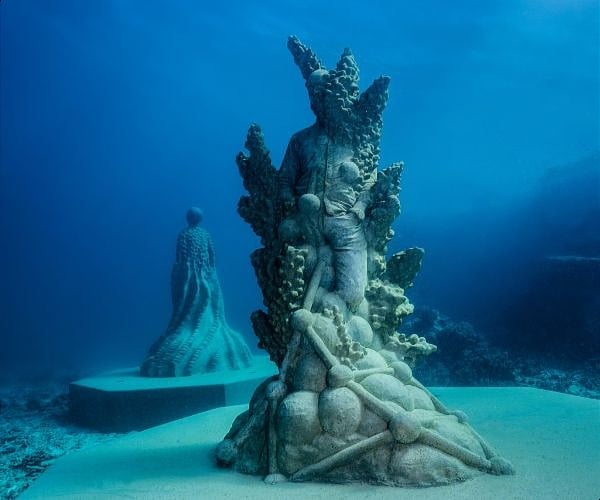
Renowned marine scientists and muse of the new trail – Professor John “Charlie” Veron OAM – also known in his field as the godfather of coral, Distinguished Professor Peter Harrison – notable as one of the discoverers of the global coral spawning phenomenon on Magnetic Island in 1981, Dr Katharina Fabricius – respected coral ecologist, and Dr Richard Braley – known as the ‘Giant Clam Man’ – will join passengers onboard a ‘special-event’ tour experience, facilitated by commercial tourism and Eco-Certified operators Sealink Queensland and Adrenalin Snorkel & Dive.
Installed in May 2023, the eight Earth-friendly green-concrete sculptures on John Brewer Reef combine to create an immersive marine science snorkel experience, adjacent to the Southern Hemisphere’s first underwater museum, the Coral Greenhouse dive attraction which opened in 2020.
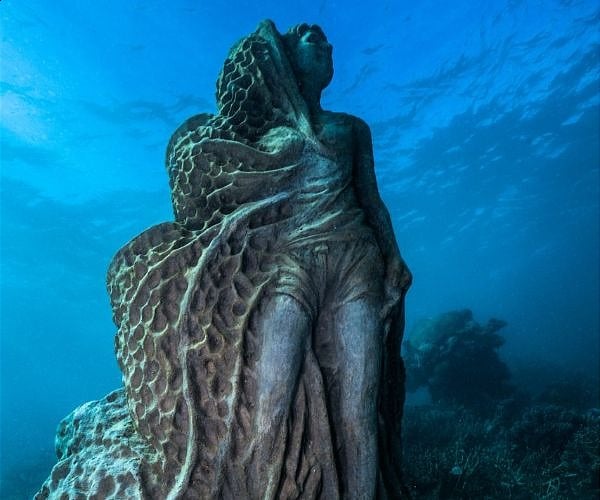
International sculptor, Jason deCaires Taylor says the artworks are synthesis of human figures and natural marine forms; predominately Australians whose work in the field of marine science and marine conservation and have been highly commended and influential in our understanding of reef protection.
“These eight pieces will be the third installation in a series of ocean-based artworks installed throughout the Townsville region. All eight models are renowned for their expertise in the field of marine science and marine conservation and their hybrid forms make reference to their contribution to their specific field of study.”
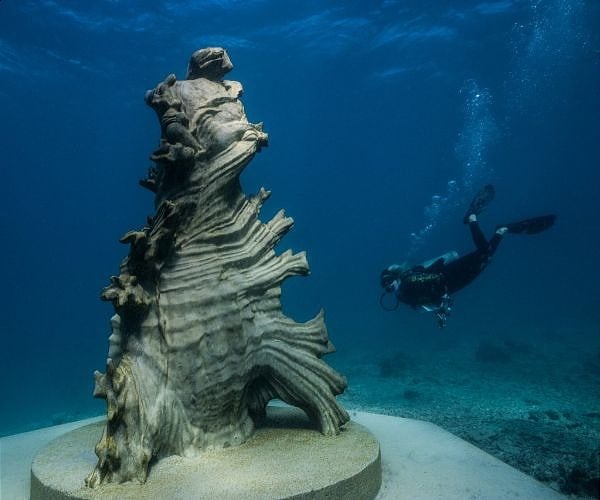
Ocean Sentinel muse and respected coral ecologist, Dr Katharina Fabricius, is proud to be part of such a globally-significant installation that further cements Townsville’s position as the best place for marine science and coral research – anywhere in the world.
“It’s [MOUA] a living piece of art that communicates to the people how important research is, how important coral reefs are, and how all these aspects – art, science, humanity – can come together to protect the reef.”
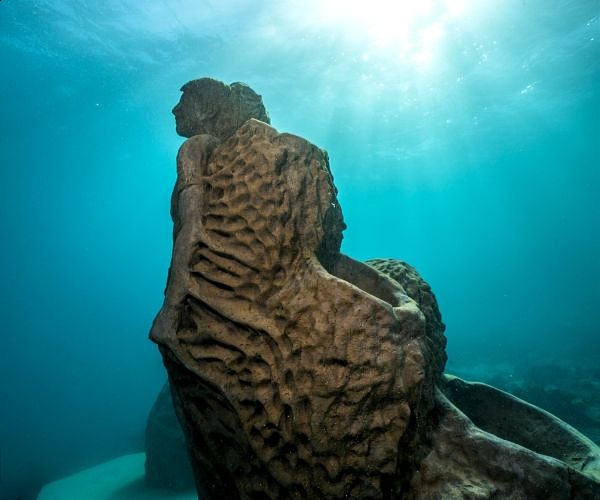
Minister for Tourism, Innovation and Sport and Minister Assisting the Premier on Olympics and Paralympics Sport and Engagement, Hon. Stirling Hinchliffe MP said the Queensland Government has committed $4 million to support stages 1 and 3 of the Museum of Underwater Art project through the Jobs and Regional Growth Fund, the Attracting Tourism Fund and the Growing Tourism Infrastructure Fund.
“Tourism is a cornerstone of the North Queensland economy and by investing in world-class tourism attractions, such as the MOUA, we help to grow the tourism industry and to create good jobs in the region,” said Mr Hinchliffe.
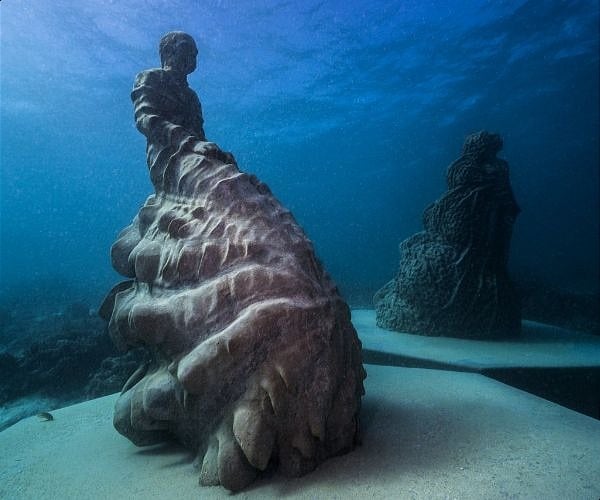
“As part of the Palaszczuk Government’s Towards Tourism 2032 roadmap, we recognise the need to invest in unique new experiences to attract visitors to regional Queensland on our runway of events to the Brisbane 2032 Olympics and Paralympic Games.”
While exploring these sculptures and the neighbouring Great Barrier Reef, this project also brings to life an accessible citizen science program, encouraging visitors to record their observations through the iNaturalist program which captures information that will aid in the reef’s ongoing protection and management.
IMPORTANT NOTICE:
If you are reading this article anywhere other than on A Luxury Travel Blog, then the chances are that this content has been stolen without permission.
Please make a note of the web address above and contact A Luxury Travel Blog to advise them of this issue.
Thank you for your help in combatting content theft.
Chair of MOUA, Paul Victory said the launch of the Ocean Sentinels coinciding with World Oceans Day was important to the vision of MOUA in sparking a meaningful conversation about the reef and its oceans.
“The purpose of World Oceans Day is to encourage a worldwide movement of citizens for the ocean, and our region’s place in being the headquarters for the Great Barrier Reef, and access to some of the world-leading minds in marine research makes this installation more than beautiful artworks – it’s about storytelling, citizen science and encouraging real change through visiting the reef.”
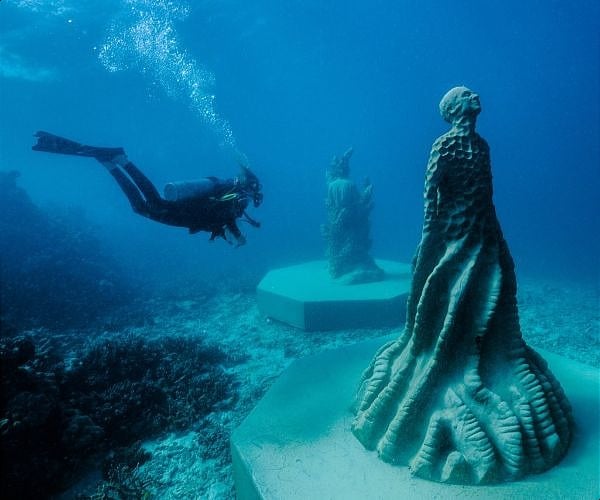
“MOUA is about bringing people and science together – by visiting the Great Barrier Reef from Townsville – arguably some of the most pristine examples of coral reef globally – and exploring internationally-acclaimed art, we are hoping visitors will leave with a deeper appreciation of how vitally important our oceans really are.”
Destination Management Organisation for the Townsville North Queensland region – Townsville Enterprise, CEO Claudia Brumme-Smith says the new installation is a huge drawcard for the region, and current dive site – being the first of its kind in the Southern Hemisphere has become known as a must-see attraction, and it is anticipated that this new snorkel product will only go to enhance the region’s reef experience.
“As the headquarters of the Great Barrier Reef, the Coral Greenhouse has been a game-changer for Townsville, and what we know is that snorkel products – which is what the Ocean Sentinel trail will be is something that will be very attractive to trade and cruise companies right across the globe, enhancing our domestic and global appeal, and generating the exposure and visitor economy that this beautiful part of the world rightly deserves.”
Did you enjoy this article?
Receive similar content direct to your inbox.


As my university tutor always told us, “If you’re going to a conference – or plan to host a conference – always opt for a great location.”
What we forget is that these conferences are few and far between. For marine scientists most days are very routine and a lot of research can be very lonely. Let’s hope they get to enjoy themselves a little whilst learning a lot.
Art installations beneath the waves – an underwater museum. Is that a first? Or does it exist anywhere else?
Let us hope that the conference can spread the message that we must work hard and immediately to preserve these precious but fragile coral reefs.
This post has given me another ambition to add onto my diving bucket list.
Curating a museum on land is one thing putting together an exhibition under the water and in very different light must take a completely contrasting set of skills.